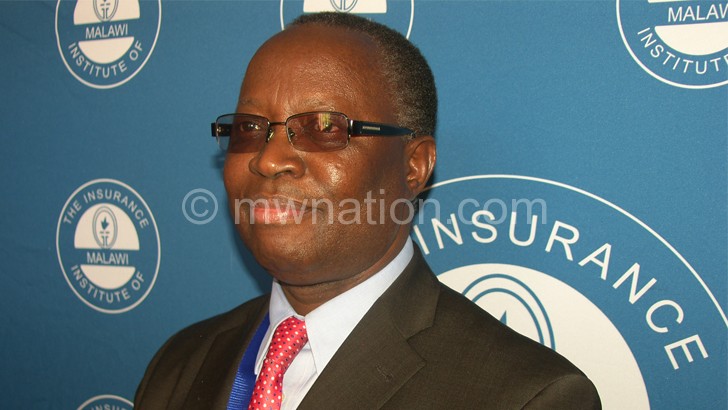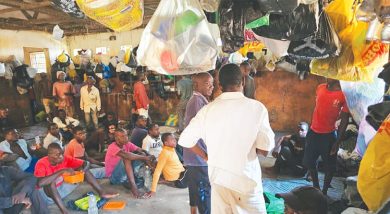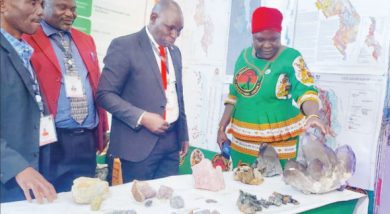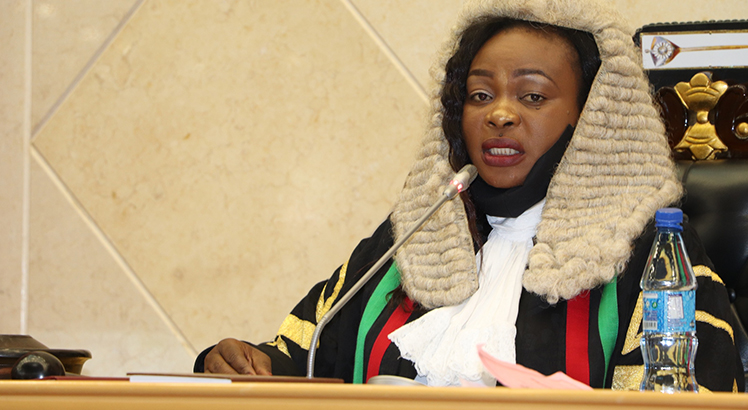RBM governor sees Kwacha stabilising
The Reserve Bank of Malawi (RBM) has said there is more room for the kwacha to stabilise following fiscal and monetary policy actions currently being implemented.
RBM Governor Charles Chuka said this on Thursday in Blantyre after the fourth Monetary Policy Committee (MPC) meeting of the year that culminated into the reduction of the policy rate or the bank rate from 27 percent to 24 percent.
He said the central bank has done more work not only on the monetary front, but also in ensuring that government borrowing reduces over time.
Said Chuka: “Since the kwacha depreciated sharply last year, we had to take a second look at the instruments we use to manage the kwacha. We have intensified our money market operations.

“People are now holding kwacha balances within the banking system. Normally, people would hide and keep the dollars, putting pressure on the kwacha. Because of this action, interest rates are at a level where people with large balances of cash would rather buy government paper than dollars.” he said.
The governor said the central bank has also been managing the interbank rate—the rate of borrowing between banks—which has since seen it closing at a point better than the previous years.
However, some economists have argued that the introduction of the K2 000 note, which will be released on December 19, is an acceptance by the central bank that the kwacha would continue to depreciate and inflation remaining elevated.
While urging caution, Chuka observed that the factor that is unknown at this time is whether the exchange rate would behave better than it did last year, saying much of it depends on liquidity conditions that may arise in the economy.
Malawi’s main foreign exchange earner, tobacco, has performed poorly this season with revenue lower than last year.
As of Friday, the dollar was selling at as high as K785 in most foreign exchange bureaus, according to RBM daily foreign exchange rate bureau rates report.
However, the kwacha strengthened against the British pound by 2.3 percent and traded at K961.47 at the end the second quarter on account of a weakening pound following diminishing investor confidence as Britain exited the European Union (EU).
Within the region, the kwacha weakened against the rand by 5.4 percent to trade at K48.29 from K45.81 per rand in the preceding quarter.
Malawi Confederation of Chambers of Commerce and Industry (MCCCI) chief executive officer Chancellor Kaferapanjira said the reduction of policy rate is encouraging, but it still remains high and prohibitive for long-term borrowing.
He said in an interview on Friday that although the reduction may stimulate private sector borrowing to some degree, the rate still remains high for businesses that would want to borrow for long-term investment projects.
“The private sector is not borrowing for productive long-term investment purposes anymore at such high existing interest rates and, therefore, it does not make sense keeping the policy rate at 27 percent,” said Kaferapanjira.
However, Bankers Association of Malawi (BAM) executive director Lyness Nkungula said the reduction in the bank rate will encourage more borrowing which would increase economic activity. n






Monetary policy in Malawi needs a total and complete overhaul if the country is going to make meaningful strides towards economic growth and development. This is not just any public comment but a well grounded comment made in public :).
First, the Reserve bank of malawi, RBM, must narrow the primary goal of monetary policy in MW to one issue; “price stability” in the country i.e. low and stable inflation, as Goal No1. Without prejudice to this goal feel free to define other secondary goals as you see fit.
Second, RBM needs to develop equations and formulas to model the impact of various economic indicators eg growth, unemployment, capacity utilisation, import, export etc showing how they impact the low price goal. Model the transmission mechanism to see end to end how the interest rate setting impacts the inflation goal taking into account various aspects in between such as asset prices, domestic demand, exchange rates etc. Don’t just rely on econometrics/ statistical tools alone but incorporate engineering, scientific and accounting models and common sense thinking.
Third, set up a forecasting team within RBM armed with systems and algorithms to model real economic indicators and their potential impact on inflation. Run the models weekly or monthly to determine a) the forecast of short, medium and long term of these economic indicators b) assess their impact on interest rate and inflation. Include fiscal policy and actual policy deliverable inputs on a monthly basis.
This model should provide input for monthly monetary policy committee (MPC). You will find that the result is a bank rate that varies every month and is not just fixed at 24% or 27 % as is current practice. The fact that the MPC meets every month and agrees the same bank rate shows that there are NO interactive models that reflect economic variables.
My assessment of current RBM bank interest rate of 24% and inflation above 20% really shows MW is out of step with the rest of the world whose similar parameters are less than 5% and 2% respectively. Unfortunately the high interest rate policy over the years has turned Malawi into a graveyard of companies due to bad debts which has led to low investment to that could have boosted supply. This shortage of supply has led to high inflation. You cannot justify using bank rates based on past performance of value at risk (VAR) analysis therefore you need to make an executive decision to cut the RBM bank rates to 5% in line with the rest of world and discourage importation to safeguard the value of the kwacha.
How can this small country have the highest interest rates in the world!